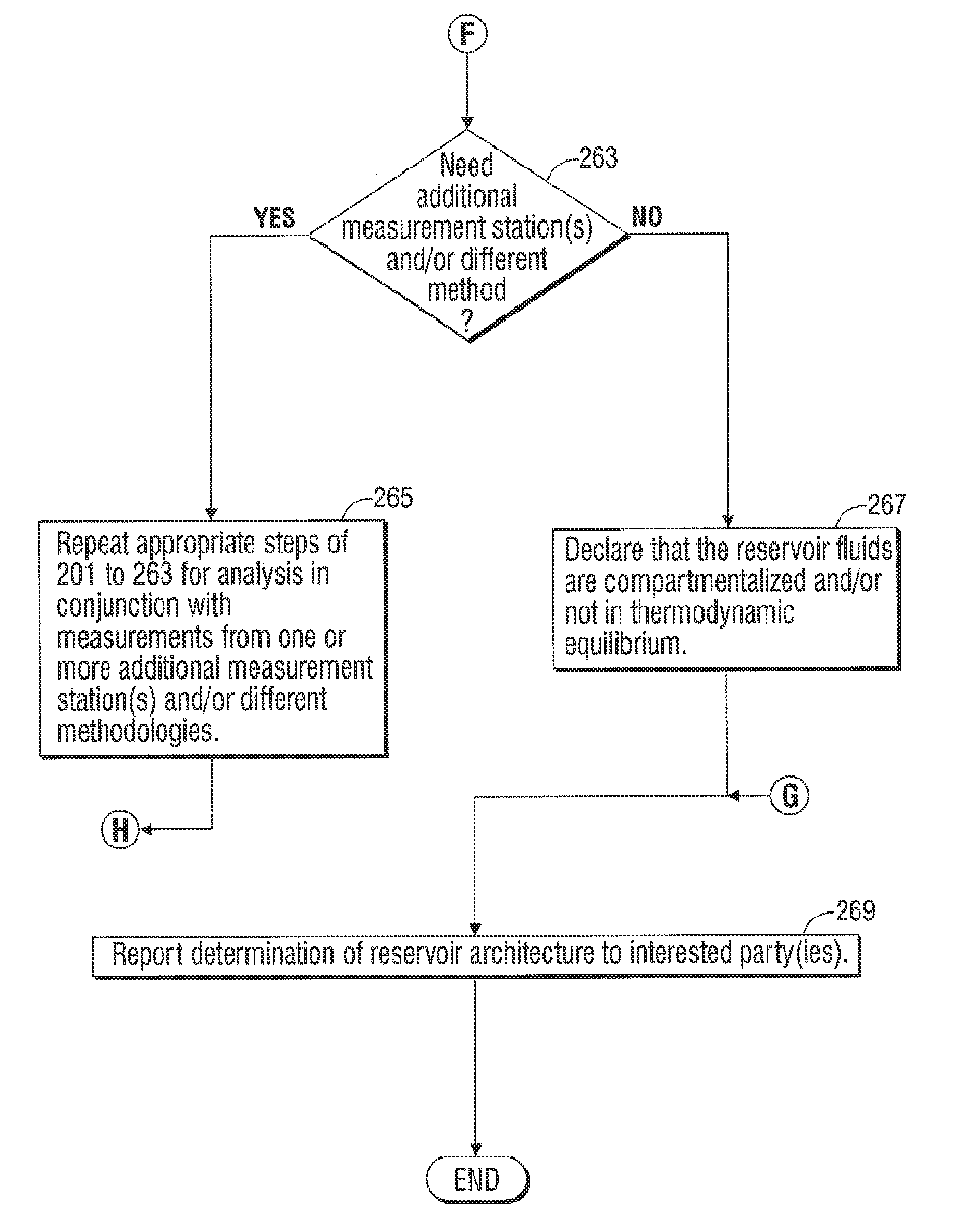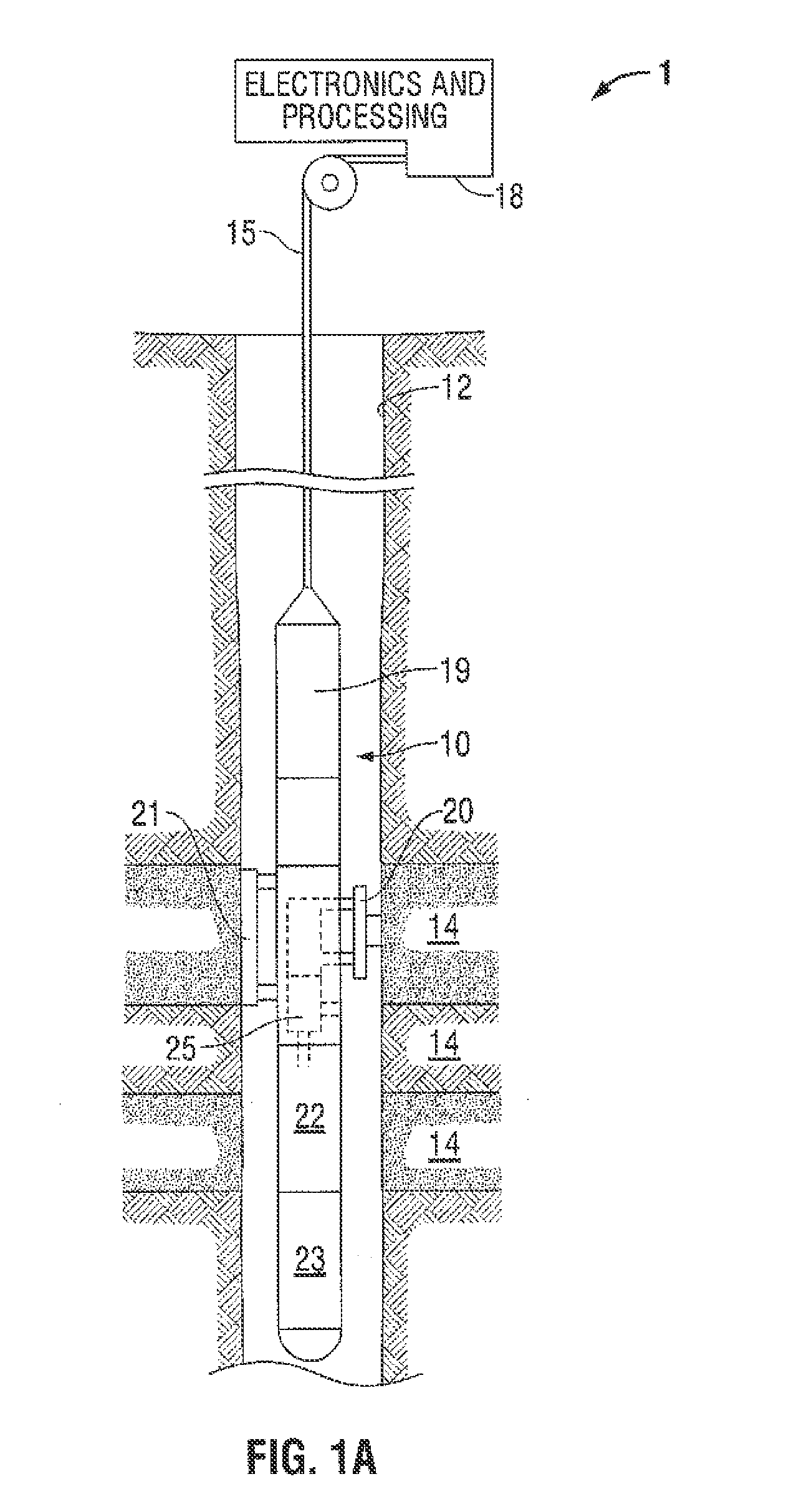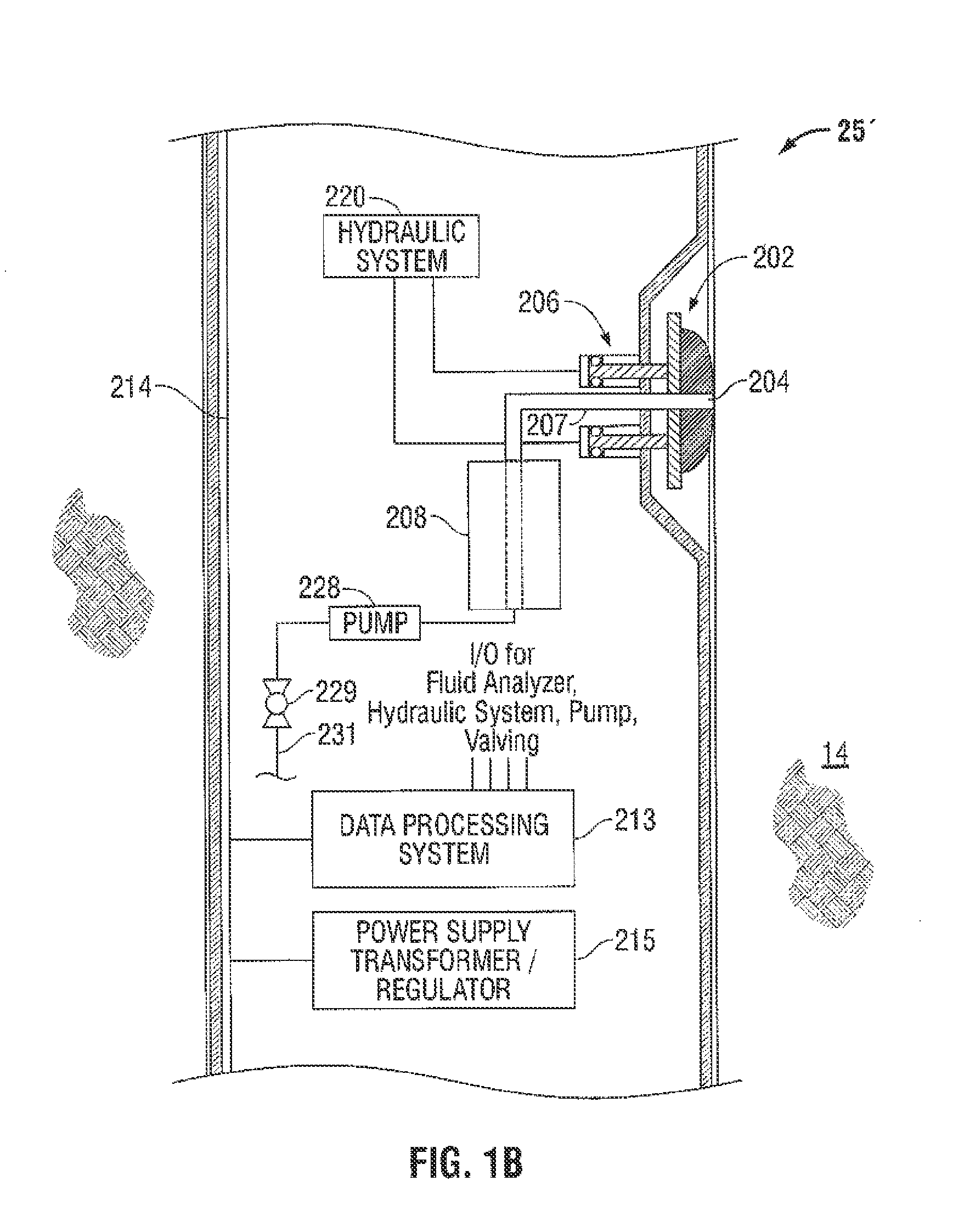Methods and apparatus for characterization of petroleum fluid employing analysis of high molecular weight components
a technology of high molecular weight components and methods, applied in seismology for waterlogging, borehole/well accessories, instruments, etc., can solve the problems of fluid heterogeneity or compartmentalization in reservoirs, erroneous interpretation of fluid contact or pressure seal, and inability to prove flow connectivity
- Summary
- Abstract
- Description
- Claims
- Application Information
AI Technical Summary
Benefits of technology
Problems solved by technology
Method used
Image
Examples
Embodiment Construction
[0025]FIG. 1A illustrates an exemplary petroleum reservoir analysis system 1 in which the present invention is embodied. The system 1 includes a borehole tool 10 suspended in the borehole 12 from the lower end of a typical multiconductor cable 15 that is spooled in a usual fashion on a suitable winch on the formation surface. The cable 15 is electrically coupled to an electrical control system 18 on the formation surface. The tool 10 includes an elongated body 19 which carries a selectively extendable fluid admitting assembly 20 and a selectively extendable tool anchoring member 21 which are respectively arranged on opposite sides of the tool body 19. The fluid admitting assembly 20 is equipped for selectively sealing off or isolating selected portions of the wall of the borehole 12 such that fluid communication with the adjacent earth formation 14 is established. The fluid admitting assembly 20 and tool 10 include a flowline leading to a fluid analysis module 25. The formation flui...
PUM
 Login to View More
Login to View More Abstract
Description
Claims
Application Information
 Login to View More
Login to View More - R&D
- Intellectual Property
- Life Sciences
- Materials
- Tech Scout
- Unparalleled Data Quality
- Higher Quality Content
- 60% Fewer Hallucinations
Browse by: Latest US Patents, China's latest patents, Technical Efficacy Thesaurus, Application Domain, Technology Topic, Popular Technical Reports.
© 2025 PatSnap. All rights reserved.Legal|Privacy policy|Modern Slavery Act Transparency Statement|Sitemap|About US| Contact US: help@patsnap.com



